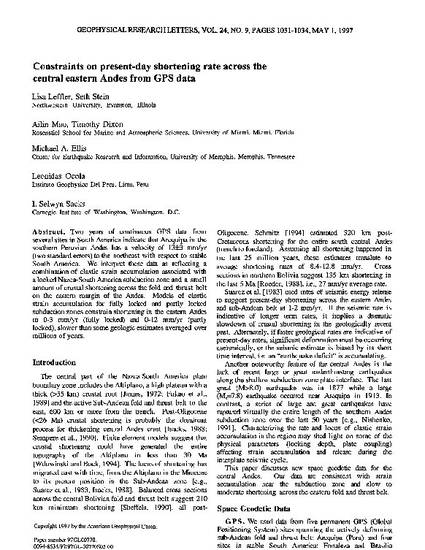
Two years of continuous GPS data from several sites in South America indicate that Arequipa in the southern Peruvian Andes has a velocity of 13±3 mm/yr (two standard errors) to the northeast with respect to stable South America. We interpret these data as reflecting a combination of elastic strain accumulation associated with a locked Nazca-South America subduction zone and a small amount of crustal shortening across the fold and thrust belt on the eastern margin of the Andes. Models of elastic strain accumulation for fully locked and partly locked subduction zones constrain shortening in the eastern Andes to 0–3 mm/yr (fully locked) and 0–12 mm/yr (partly locked), slower than some geologic estimates averaged over millions of years.
Geophysical Research Letters, v. 24, issue 9, p. 1031-1034
Copyright 1997 by the American Geophysical Union.
Available at: http://works.bepress.com/timothydixon/21/
